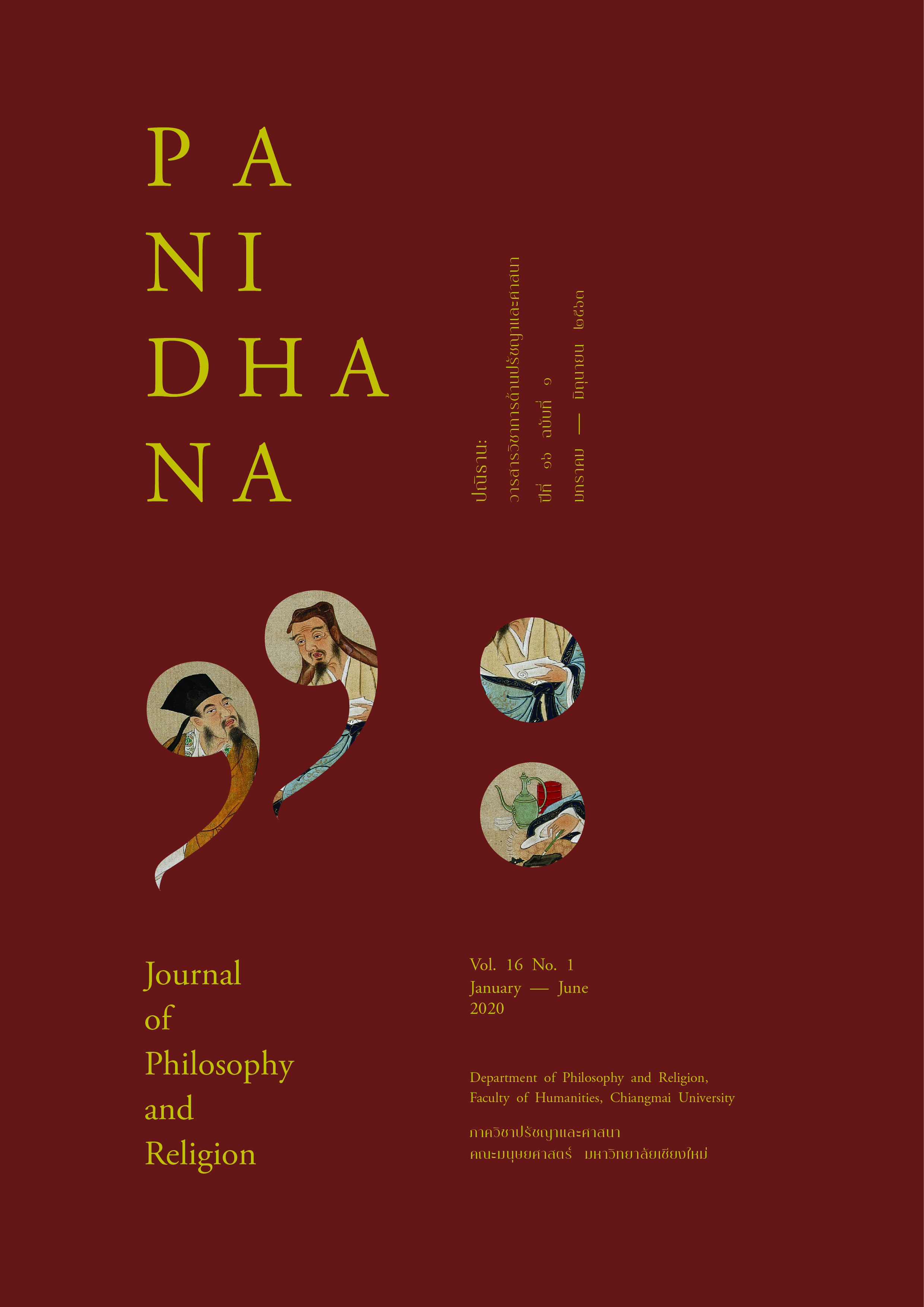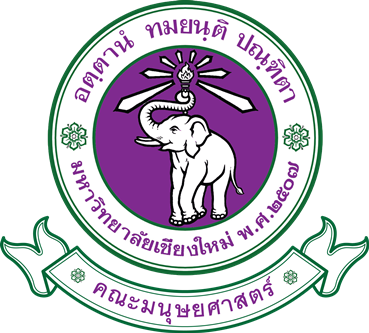ระบบวรรณะของชาวมุสลิมในอินเดีย
คำสำคัญ:
ระบบวรรณะ, ชาวมุสลิม, อินเดีย, อิสลามบทคัดย่อ
ระบบวรรณะในอินเดียได้รับการตีความว่าเป็นรูปแบบโครงสร้างสังคมชนิดหนึ่ง ซี่งจัดตำแหน่งและกำหนดงานให้กับสมาชิกในสังคมโดยเชื่อมโยงกับความเชื่อทางศาสนา จากการศึกษาพบว่าระบบวรรณะของศาสนาฮินดูมีอิทธิพลต่อชาวมุสลิมในอินเดีย เนื่องมาจากชาวมุสลิมส่วนใหญ่ในอินเดียคือผู้ที่บรรพบุรุษเปลี่ยนมานับถือศาสนาอิสลามในช่วงที่อาณาจักรมุสลิมปกครองอินเดียในยุคกลาง ดังนั้นจึงรักษาแนวคิดเรื่องวรรณะไว้ แม้ในหลักคำสอนของศาสนาอิสลามจะห้ามเรื่องการไม่แบ่งชนชั้นวรรณะ ระบบวรรณะในสังคมมุสลิมมีความเข้มงวดและความสลับซับซ้อนน้อยกว่าระบบวรรณะของฮินดู เนื่องจากระบบวรรณะในหมู่ชาวมุสลิมถูกมองว่าเป็นรูปแบบการจัดช่วงชั้นและหน้าที่ในสังคมที่ไม่เกี่ยวข้องกับคำสอนทางศาสนา ระบบวรรณะในสังคมมุสลิมอินเดียดำรงอยู่ได้เพราะสอดคล้องกับโครงสร้างสังคมทั่วไปในอินเดีย ส่วนชนชั้นปกครองชาวมุสลิมในยุคกลางได้รับประโยชน์จากแนวคิดเรื่องวรรณะที่สามารถจัดระเบียบและหน้าที่ให้กับประชาชนทุกศาสนาอีกทั้งสร้างความมั่นคงทางอำนาจให้แก่ผู้ปกครองด้วยอีกทางหนึ่ง
เอกสารอ้างอิง
Books:
Ahmad,(n.d.). Musnad,al-Qahirah: MuasasahQurtubah
Ahmad, Imtiaz (ed.). (1973). Caste and social stratification among the Muslims. Delhi: Manohar Book Service.
Ahmad, Imtiaz (ed.). (1978). Caste and social stratification among the Muslims. 2nd Edition. Delhi: Manohar Book Service.
Ali, A. F. Imam. (1992). Social Stratification Among the Muslim Hindu Community. Delhi: Commonwealth Publishers.
Ansari, Ghaus. (1960). Muslim Caste in Uttar Pradesh: A Study of Culture Contact. Uttar Pradesh: Ethnographic and Folk Culture Society.
Barbara D. Metcalf (ed.). (2009). Islam in South Asia in Practice. Princeton: Princeton University Press.
Bhattacharya (1978: 289-290). In Khanam, Azra. (2013). Muslim Backward Classes: A Sociological Perspective. New Delhi: SAGE Publications.
D’Souza, Victor. (1978). Caste and Social Stratification among Muslims in India. New Delhi: Manohar
Faridi, F. R.; & Siddiqi, M. M. (Ed). (1992). The Social Structure of Indian Muslims. New Delhi: South Asia books.
Ghurye, G. S. (2019). Caste and Race in India. 5th ed. New Delhi: SAGE Publications.
Gill, S.S. (2008). Islam and the Muslims of India: Exploring History, Faith and Dogma. New Delhi: Penguin.
Hutton, J. H. (1955). Caste in India: Its Nature, Function, and Origins. 2nd ed. Oxford: Oxford University Press.
Ketkar, S. V. (1905). The History of Caste in India. In Khanam, Azra. (2013). Muslim Backward Classes: A Sociological Perspective. New Delhi: SAGE Publications.
Khan, Masood Ali. (2008). Islam in Modern India. New Delhi. Mohit Publications.
Khanam, Azra. (2013). Muslim Backward Classes: A Sociological Perspective. New Delhi: SAGE Publications.
Khurshid, Salman. (2019). Invisible Muslim Invisible Citizen: Understanding Islam in Indian Democracy. New Delhi: Rupa Publications.
Kumar, Satish (ed.). (2010). India’s National Security: Annual Review 2009. New Delhi: Routledge.
Leach, E. R. (ed.) (1971). Aspects of Caste in South India, Ceylon and North-West Pakistan. Cambridge: Cambridge University Press.
Mines, Mattison. (1978). Social stratification among Muslim Tamils in Tamil-nadu, south India. In Imtiaz Ahmad (ed.), Caste and Social Stratification among Muslims in India. New Delhi: Manohar.
Mondal, Sekh Rahim. (1997). Muslims of Siliguri. New Delhi: Institute of Objective Studies.
Nestfield, J. (1885). Brief View of the Caste System of the North-West Provinces and Oudh. In Bayly, Susan. (1999). Caste, Society and Politics in India. Cambridge: Cambridge University Press.
Risley, Herbert. (1915). The People of India. In Khanam, Azra. (2013). Muslim Backward Classes: A Sociological Perspective. New Delhi: SAGE Publications.
Sharif, Ja’far. (1972). Islam in India: Qanun-i-Islam. Translated by G.A. Herklots. Surrey: Curzon Press Ltd.
Journal:
Thaworn, Kritsana and Phramaha Duangden Thitañano. (2016). botbāt kān botbāt kān sœ̄msāng santiphāp khō̜ng dō̜n . ʻambēt kā tām lak phut santiwithī [The Peace Strengthening Role of Dr. Ambedker according to the Buddhist Peaceful Means]. Journal of MCU Peace Studies . Vol. 4 ( Special Issue): 209-219.
Phramahākritsada tisōpnō, Phramahāprasān tō and Krasang, Anuwat. (2017). Kānčhatkānkhwāmkhatyǣngnairabopwannakhō̜ng Dō̜n.ʻembǣtkā [Conflict Management in Caste System of Dr. Ambedkar]. Journal of MCU Social Science Review. 6 (2): 553-564)
Keawsufong, Somwang. Rabopwanna: Panhālæthāngʻō̜knaimummō̜ngkhō̜ng Mahātma Khānthī læ Dō̜n. Bī. ʻĀ ʻAmbētkā [Caste System Problem and Its Solution According to M.K. Gandhi and B.R. Ambedkar’s Perspectives]. Panidhana. 12(2): 122-139.
Keawsufong, Somwang. (2018). Kāndamrongyūkhō̜ngrabopwannanaisangkhomʻindīa [The Continuity of Caste System in Indian Society]. Panidhana. 14(1): 115-134.
Website:
BBC News. (2016). Why are many Indian Muslims seen as untouchable?. Retrieved 2 January 2020, from https://www.bbc.com/news/world-asia-in-dia-36220329
BBC New. (2019). What is India's caste system?. Retrieved December 21, 2019 from https://www.bbc.com/news/world-asia-india-35650616#:~:text=The%20caste%20system%20divides%20Hindus,the%20Hindu%20God%20of%20creation.
The Economic Times. (2016). In western Uttar Pradesh, local Muslims deny spaceto ‘settlers’ from other caste to bury dead. Retrieved 1 January 2020, from https://economictimes.indiatimes.com/news/politics-and-nation/in-western-uttar-pradesh-local-muslims-deny-space-to-settlers-from-other-caste-to-bury- dead/articleshow/52787717.cms?utm_source=contentofinterest&utm_medium=text&utm_campaign=cppst
Thō̜nglek, Nipat. (2016). phāp kaolao tamnān čhanthān thī klāi pen phračhao dœ̄n din nai ʻIndīa. Matichon online. Retrieved June 9, 2019 from https://www.matichon.co.th/news-monitor/news_1113031
Thosrikeaw, Borworn. (2016). Sưkwannaʻindīayukmai Yō̜mlotchanphư̄ahaiyūrō̜t. Thairath online. Retrieved January 9, 2019 from https://www.thairath.co.th/content/583152
Vansu, Roostum. (2015).ʻIndīačhasaʻātphāinai Hā Pī!. Deep South Watch. Retrieved June 20, 2019 from https://deepsouthwatch.org/th/node/6266.
Frontline. (2014). Caste & Muslims. Retrieved 3 January 2020, from https://front-line.thehindu.com/books/caste-amp-muslims/article5914944.ece
Momin, A.R. (1978). Muslim Caste: Theory and Practice. Economic and Political Weekly. 10(14) (pp. 580-582). Retrieved from https://www.jstor.org/stable/4537008?seq=1
Siddiqui. (2005). Muslims of Calcutta. 3rd edition. Kolkata: Creative Data Centre. Retrieved 3 January 2020, from https://archive.org/stream/muslimsof-calcutt00sidd/muslimsofcalcutt00sidd_djvu.txt
Time of India. (May 31, 2015). Cheraman Juma Masjid: A 1,000-year-old lamp burns in this mosque. Retrieved 1 February 2020, from http://timesofin-dia.indiatimes.com/articleshow/47486911.cms?utm_source=contentofinterest&utm_medium=text&utm_campaign=cppsta
ดาวน์โหลด
เผยแพร่แล้ว
รูปแบบการอ้างอิง
ฉบับ
ประเภทบทความ
สัญญาอนุญาต
เนื้อหาของบทความที่ได้รับการตีพิมพ์ในวารสารปณิธานถือเป็นลิขสิทธิ์ของวารสารปณิธาน ห้ามเผยแพร่ ตัดต่อ แก้ไข หรือนำไปใช้ก่อนได้รับอนุญาต
ผู้สนใจสามารถติดต่อขอเผยแพร่เนื้อหาในวารสารปณิธานได้ที่ panidhana-human@cmu.ac.th







